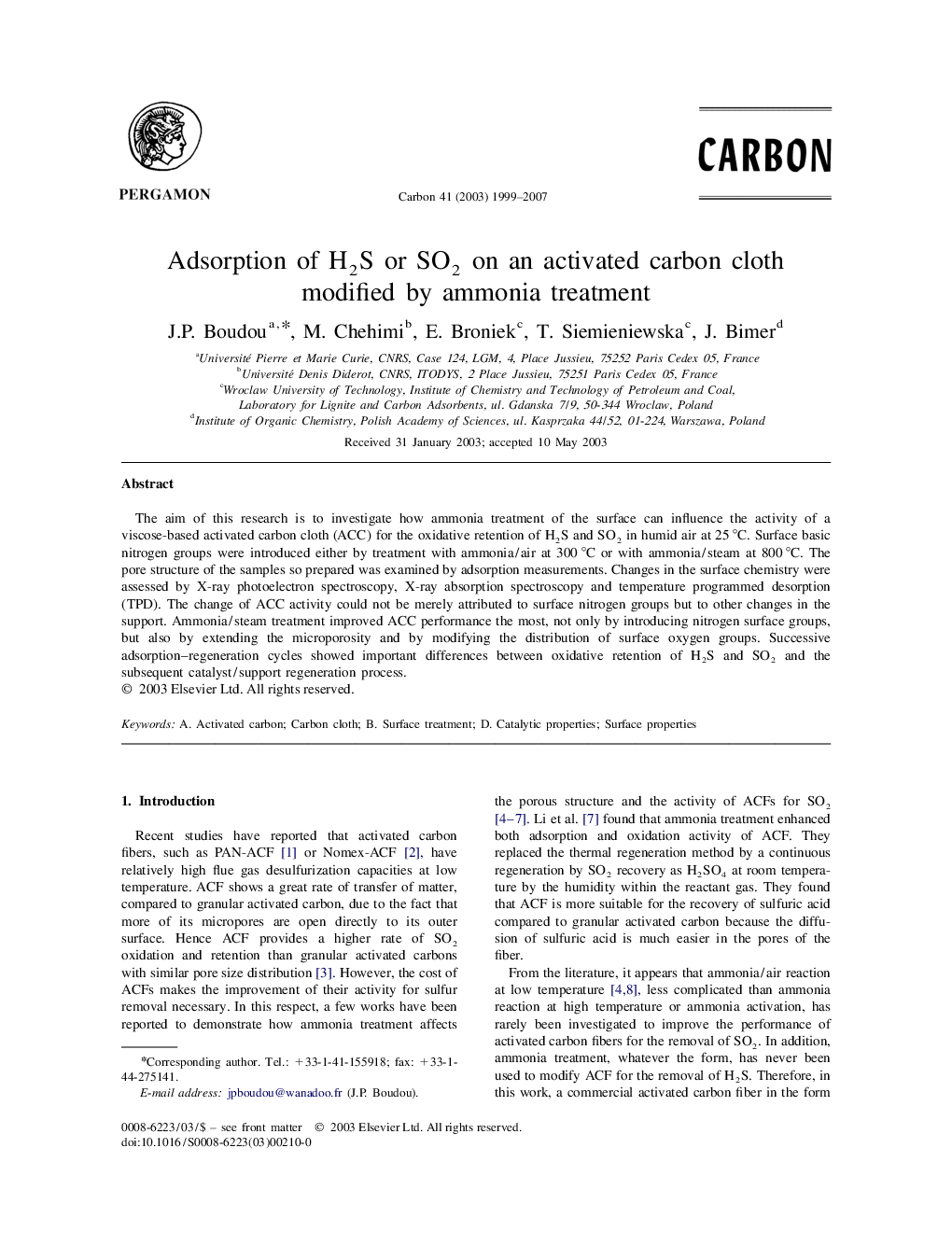| Article ID | Journal | Published Year | Pages | File Type |
|---|---|---|---|---|
| 1420301 | Carbon | 2007 | 9 Pages |
The aim of this research is to investigate how ammonia treatment of the surface can influence the activity of a viscose-based activated carbon cloth (ACC) for the oxidative retention of H2S and SO2 in humid air at 25 °C. Surface basic nitrogen groups were introduced either by treatment with ammonia/air at 300 °C or with ammonia/steam at 800 °C. The pore structure of the samples so prepared was examined by adsorption measurements. Changes in the surface chemistry were assessed by X-ray photoelectron spectroscopy, X-ray absorption spectroscopy and temperature programmed desorption (TPD). The change of ACC activity could not be merely attributed to surface nitrogen groups but to other changes in the support. Ammonia/steam treatment improved ACC performance the most, not only by introducing nitrogen surface groups, but also by extending the microporosity and by modifying the distribution of surface oxygen groups. Successive adsorption–regeneration cycles showed important differences between oxidative retention of H2S and SO2 and the subsequent catalyst/support regeneration process.
